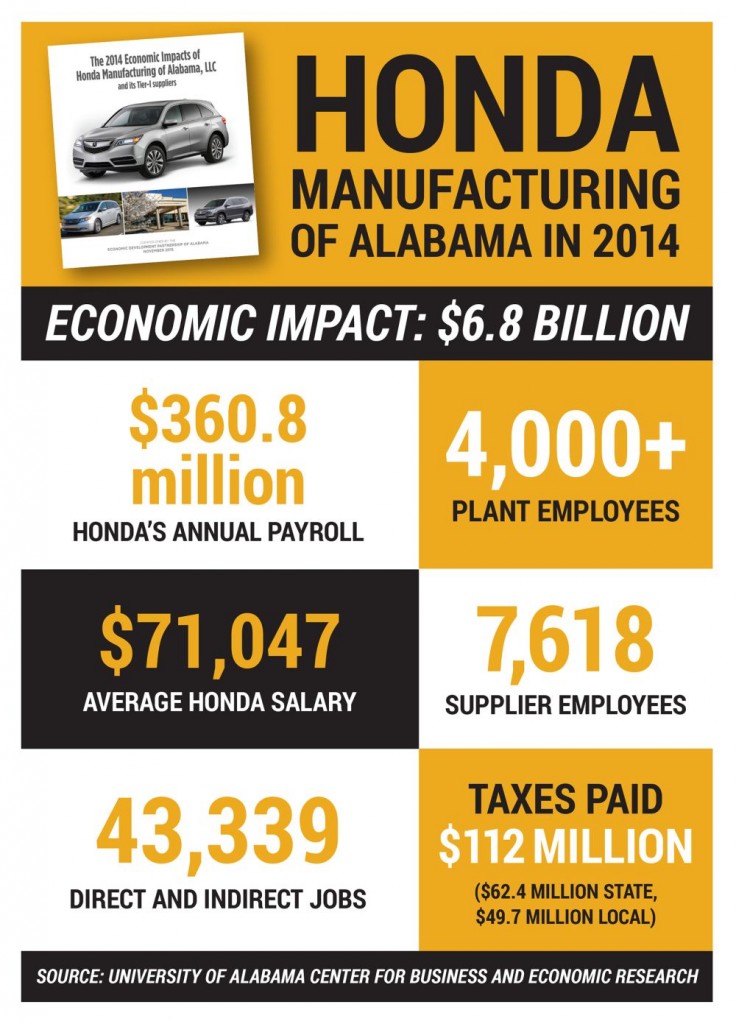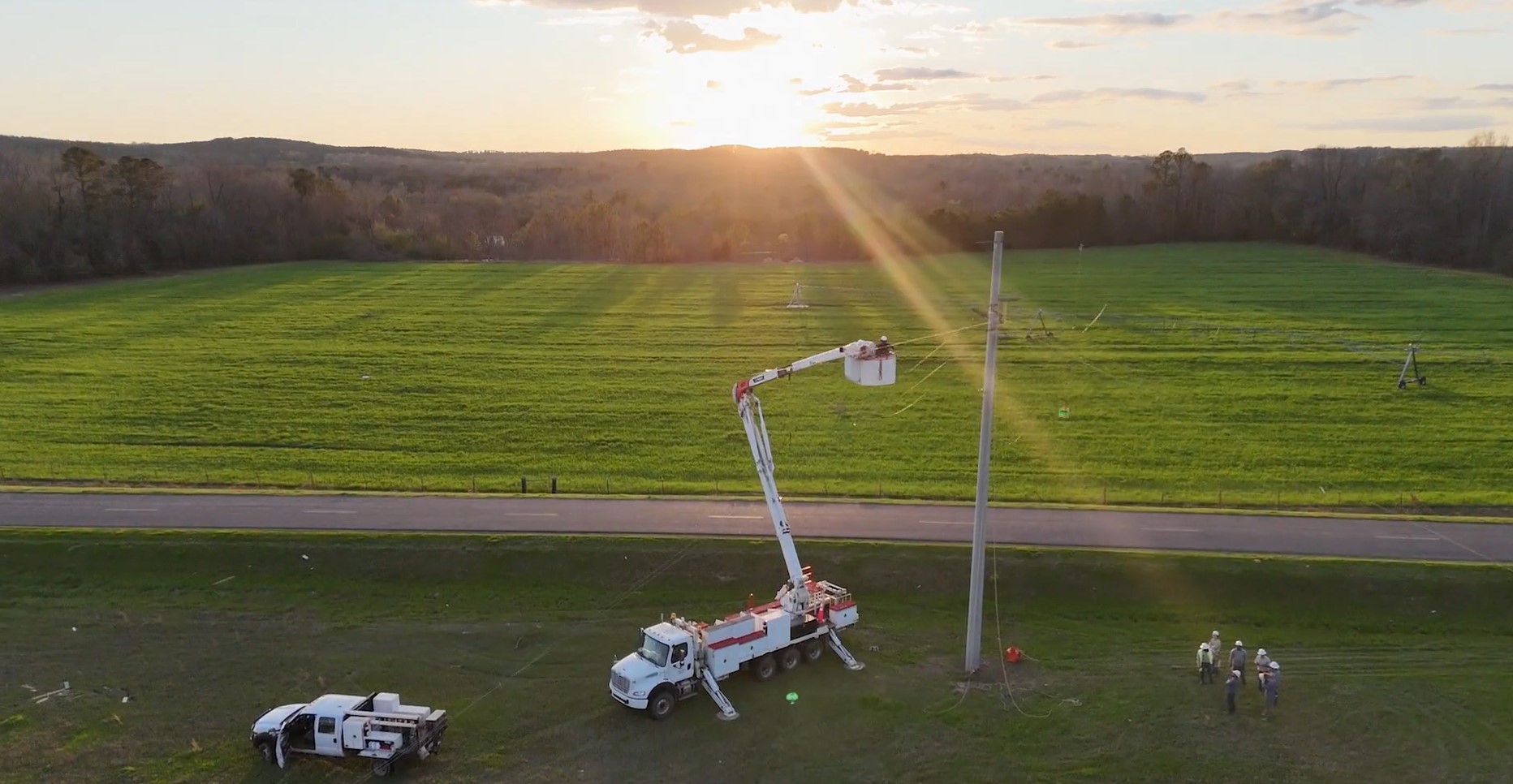Alabama aims to attract more auto industry growth on heels of Honda’s economic impact report

Look at these Honda people.
As impressive as the figures were in the economic impact report revealed earlier this week for Honda’s Alabama plant, economic development officials are convinced there is much more capacity to grow the automotive industry in the state.
“The news on Honda is not surprising, but it is invigorating,” Alabama Commerce Secretary Greg Canfield said in an interview.
A look at Honda’s economic impact in Alabama from Alabama NewsCenter on Vimeo.

Honda economic impact. (Alabama NewsCenter graphic/Jay Parker)
It’s easy to see why the state’s lead economic developer would be invigorated by the numbers from the report seen in this graphic:
Add to that the Tier 1 suppliers to the Honda plant – those that directly supply the automaker (often called OEM for original equipment manufacturer) – and you can count an additional $1.9 billion in economic output.
The numbers grow with lower tier suppliers that produce parts used by other suppliers up the chain.
Those are areas where Canfield said the state can see the most growth today.
“We have done a great job of growing the OEM base and growing the Tier 1 base that supports them,” he said. “What we really need to focus on now is that need to grow the Tier 2, the Tier 3 and down into the Tier 4 supply chain because there is where we have a lot of extra capacity. We really need to do that to continue to underpin the support for the OEMs that are here.”
Canfield also sees the need for the so-called “knowledge-based” areas of the industry that are primarily in research and design along with technology and innovation tied to the automotive companies.
“We’re making efforts to help grow automotive R&D,” he said. “If we’re going to build them here, let’s imagine them here.” What doesn’t have to be imagined is what the industry has come to mean to the state and the workers it employs.
“In Talladega County, it really means that people have the opportunity to have a good-paying job and enjoy a quality of life that they haven’t had in the past,” said Calvin Miller, executive director of the Talladega County Economic Development Authority.
“Honda, the plant alone, accounted for 3.4 percent of the state’s economic output,” said Sam Addy, director for the Center for Business and Economic Research at the University of Alabama and author of the economic impact report. “It’s becoming a larger and larger part of the state’s economy. I personally believe we haven’t matured the industry in this state.”
Coming after Mercedes-Benz in Tuscaloosa County and before Hyundai chose Montgomery County, Honda’s decision to locate in Alabama in 1999 was seen as significant.
“When Honda chose to locate a plant in Lincoln, it was further validation of the automotive industry here,” said Ken Novak, vice president of Economic & Community Development at Alabama Power. “Honda put its stamp of approval on Alabama and we have all seen the automotive industry excel in this state. Still, it’s impressive when you see the numbers and the impact spelled out.”

Officials at the unveiling of the Honda economic impact report. (Michael Tomberlin/Alabama NewsCenter)
That stamp of approval led to other Japanese companies locating to Alabama.
“The fact is that since 1999 when Honda made the decision to come to Alabama … we have seen almost $5 billion of new capital investment from Japanese companies in the state of Alabama,” Canfield said. He said
Birmingham’s recent hosting of the SEUS Japan Conference “painted a picture and told a story about the relationship between Alabama and Japan.”
Jeff Tomko, president of Honda Manufacturing of Alabama, said the Honda plant will mark its 15th year producing vehicles in Alabama next year with the production of the next generation Ridgeline pickup.
“Many folks are really excited about the launch of our new Ridgeline, our re-designed Ridgeline,” he said. “I’ve happened to see it a couple of times. It’s a really good-looking vehicle and I think everyone is going to love it.”
The truck will be unveiled at the North American Auto Show in Detroit next month.
Honda’s growth validates its decision to come to Alabama, said Bill Taylor, CEO of the Economic Development Partnership of Alabama, which commissioned the report. “Year over year, they’ve had growth and expansion, which has created really interesting careers for more than 4,000 associates to that operation.”
Tomko looked back to when the first vehicle was produced in Alabama in 2001. He said Honda brought it to community and economic development leaders and suppliers to tell them “thanks to you, we made it.”
“Fast forward almost 15 years where we are today and more than 3 million units produced in that factory,” he said. “I’m really proud to stand here on behalf of Honda today and say, thanks to you, we’re still making it.”





